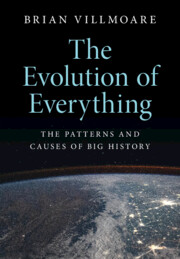Book contents
- The Evolution of Everything
- The Evolution of Everything
- Copyright page
- Contents
- Figure Credits
- Acknowledgments
- Chapter 1: Introduction
- Part I Introduction to the Scientific Perspective on the Past
- Part II Science and History
- Chapter 16: The Neolithic
- Chapter 17: States and Nations
- Chapter 18: Religion and Philosophy
- Chapter 19: The Enlightenment
- Chapter 20: The Industrial Revolution
- Chapter 21: Economics
- Chapter 22: Globalism
- Chapter 23: Modernity
- Chapter 24: Prospects for the Future
- Additional Readings
- Index
Chapter 21: - Economics
from Part II - Science and History
Published online by Cambridge University Press: 03 November 2022
- The Evolution of Everything
- The Evolution of Everything
- Copyright page
- Contents
- Figure Credits
- Acknowledgments
- Chapter 1: Introduction
- Part I Introduction to the Scientific Perspective on the Past
- Part II Science and History
- Chapter 16: The Neolithic
- Chapter 17: States and Nations
- Chapter 18: Religion and Philosophy
- Chapter 19: The Enlightenment
- Chapter 20: The Industrial Revolution
- Chapter 21: Economics
- Chapter 22: Globalism
- Chapter 23: Modernity
- Chapter 24: Prospects for the Future
- Additional Readings
- Index
Summary
Understanding economics is critical to understanding the history of humanity, from hunter-gatherers to today. Economics is the study of decision-making and how humans make decisions. Without understanding economics we cannot understand the trajectory of history over the last 10,000 years. This chapter reviews basic economic principles, and how economies have evolved through time. It discusses the economic principles of Adam Smith and Karl Marx, the differences between a market economy and a command economy, and the political and historical implications of the clash between those two models.
Keywords
- Type
- Chapter
- Information
- The Evolution of EverythingThe Patterns and Causes of Big History, pp. 319 - 342Publisher: Cambridge University PressPrint publication year: 2022

